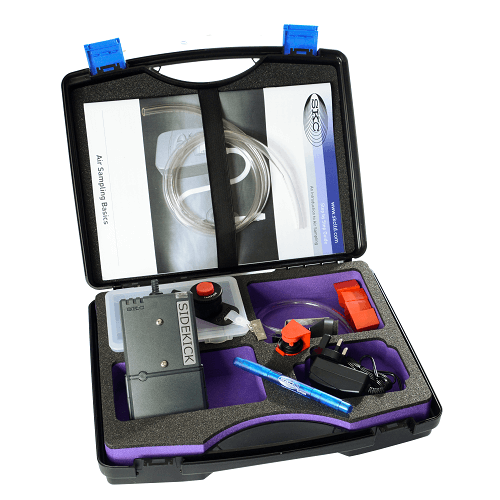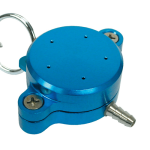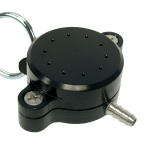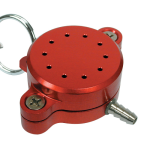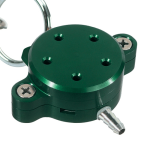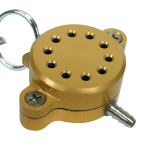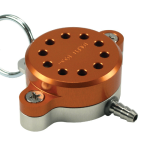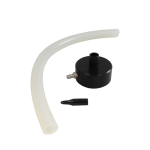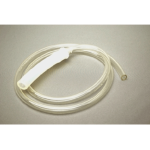- Air Sampling Pumps
- Calibration Equipment
- Servicing and Calibration
- Sampling Heads
- Sorbent Tubes
- Passive Samplers
- Particulate Monitors
- Filters and Cassettes
- Gas Sample Bags
- Air Sampling Kits
- Gastec Detection Tubes
- Face Level Sampling
- Surface & Skin Sampling
- Asbestos Sampling
- Bioaerosol Sampling
- Environmental Sampling
- Noise Monitoring
- Vibration Monitoring
- Air Sampling Pumps
- Calibration Equipment
- Servicing and Calibration
- Sampling Heads
- Sorbent Tubes
- Passive Samplers
- Particulate Monitors
- Filters and Cassettes
- Gas Sample Bags
- Air Sampling Kits
- Gastec Detection Tubes
- Face Level Sampling
- Surface & Skin Sampling
- Asbestos Sampling
- Bioaerosol Sampling
- Environmental Sampling
- Noise Monitoring
- Vibration Monitoring
Personal Environmental Monitor (PEM)
The Personal Environmental Monitor (PEM) is a lightweight, personal sampling device used with a personal sampling pump to provide effective collection of particulates of either 2.5 (PM2.5) or 10 µm (PM10) aerodynamic equivalent diameter in indoor air. Personal exposure is determined through gravimetric analysis for particle mass and chemical analysis for specific compounds. The PEM is available in 3 different flow rates.
- Small and unobtrusive - can be connected to a sample pump and worn in the breathing zone
- Referenced in EPA Method IP-10A
- Suitable for ACGIH thoracic TLVs, including sulphuric acid and cotton dust as thoracic particulate matter with 10 µm PEM
The PEM consists of 3 major parts: cap, impaction ring assembly, and base with after-filter. When used with a personal sampling pump at the required flow rate, the aerosol is accelerated through a number of nozzles in the cap. Through inertia, particles larger than 50% cut-point of the sampler impact onto a greased impaction ring and can be discarded after sampling. Particles smaller than the 50% cut-point pass through the impactor and collect on a 37 mm after-filter.
The PEM was developed for indoor air sampling. While it is not an EPA-certified instrument for ambient PM10 and PM2.5 sampling for the National Ambient Air Quality Standard (NAAQS), outdoor use can be effective if there is no excessive wind velocity or rain present at the time of sampling.
| Flow Rate | 2,4 or 10 L/min | |
| 50% Cut-point | 2.5 or 10 µm, depending on model | |
| Sample Media | 37 mm PTFE Filters | |
| Tubing | 3/16 inch (4.76mm) ID | |
| Dimensions | 60 x 65 x 22 mm (2.3 x 2.5 x 0.9 in) | |
| Weight | 48 g (1.7 oz) |
| Description | Pack Size | Part Number | |
| Personal Environmental Monitor (blue) for PM2.5 (2.5 µm) (requires 37 mm after-filters and impaction plate coating*) Sampling Flow: 2 L/min |
Each | 761-203 |  |
| Personal Environmental Monitor (black) for PM2.5 (2.5 µm) (requires 37 mm after-filters and impaction plate coating*) Sampling Flow: 4 L/min |
Each | 761-203A |  |
| Personal Environmental Monitor (red) for PM2.5 (2.5 µm) (requires 37 mm after-filters and impaction plate coating*) Sampling Flow: 10 L/min |
Each | 761-203B |  |
| Personal Environmental Monitor (green) for PM10 (10 µm) (requires 37 mm after-filters and impaction plate coating*) Sampling Flow: 2 L/min |
Each | 761-200 |  |
| Personal Environmental Monitor (gold) for PM10 (10 µm) (requires 37 mm after-filters and impaction plate coating*) Sampling Flow: 4 L/min |
Each | 761-200A |  |
| Personal Environmental Monitor (bronze) for PM10 (10 µm) (requires 37 mm after-filters and impaction plate coating*) Sampling Flow: 10 L/min |
Each | 761-200B |  |
* For most sampling applications, a light mineral oil is suggested, see PEM User Guide section 5.2 for more information. Light mineral oil not available from SKC and must be sourced independently.
| Description | Pack Size | Part Number | |
| Calibration Cap Supplied with 3/8 inch ID silicone tubing, suitable for 375-50300 high flow chek-mate and other flowmeters with larger connectors. To connect to 375-0550 medium flow chek-mate or other flowmeters with 1/4 inch (6.4mm) connector, the 225-6202 Tubing can be purchased separately, see below. |
Each | 761-202 |  |
| Tubing for Calibration Cap, includes 1 m of 1/4 inch ID x 3/8 inch OD Tygon tubing, attached to 10 cm of 3/8 inch ID x 5/8 inch OD silicone tubing. For connecting Calibration Cap to 375-0550 medium flow chek-mate or other flowmeter with 1/4 inch (6.4mm) connector. |
Each | 225-6202 |  |
| After-filter, 37 mm (2 µm pore PTFE ‡ † filter with PMP support ring) | 50 | 225-1709 |  |
| Clamping Device, ensures that the nozzle cap is clamped parallel to the base | Each | 761-201 |  |
‡ Back pressure on PTFE filters can vary within the same lot.
† The maximum operating temperature for PTFE filters with PMP support ring is 240°C.

